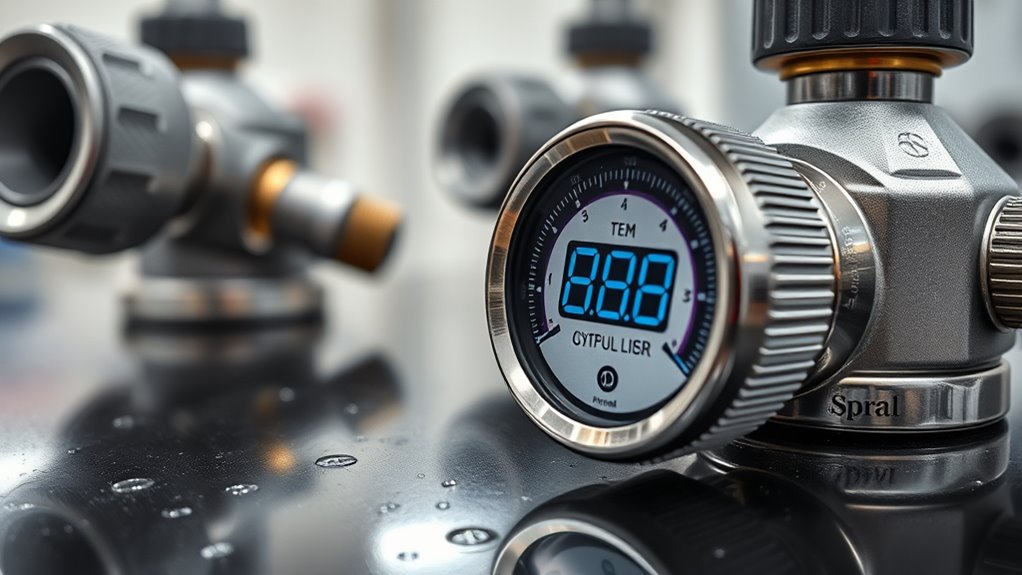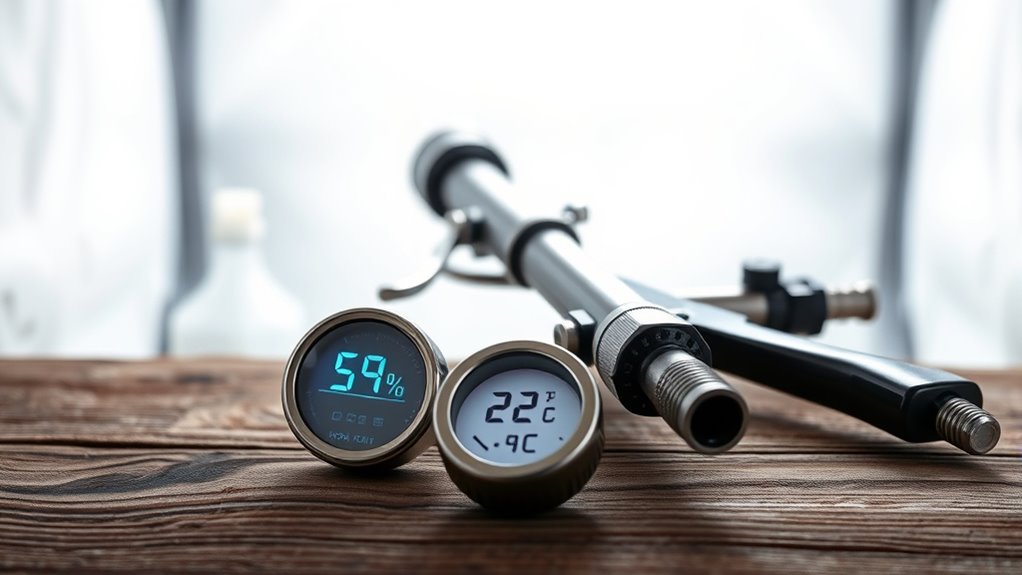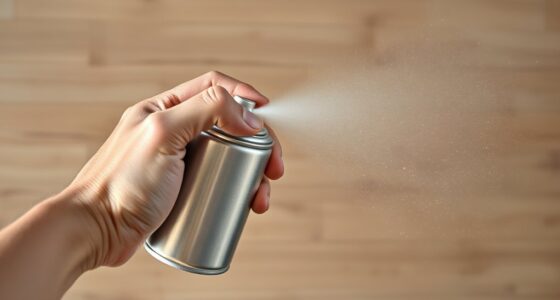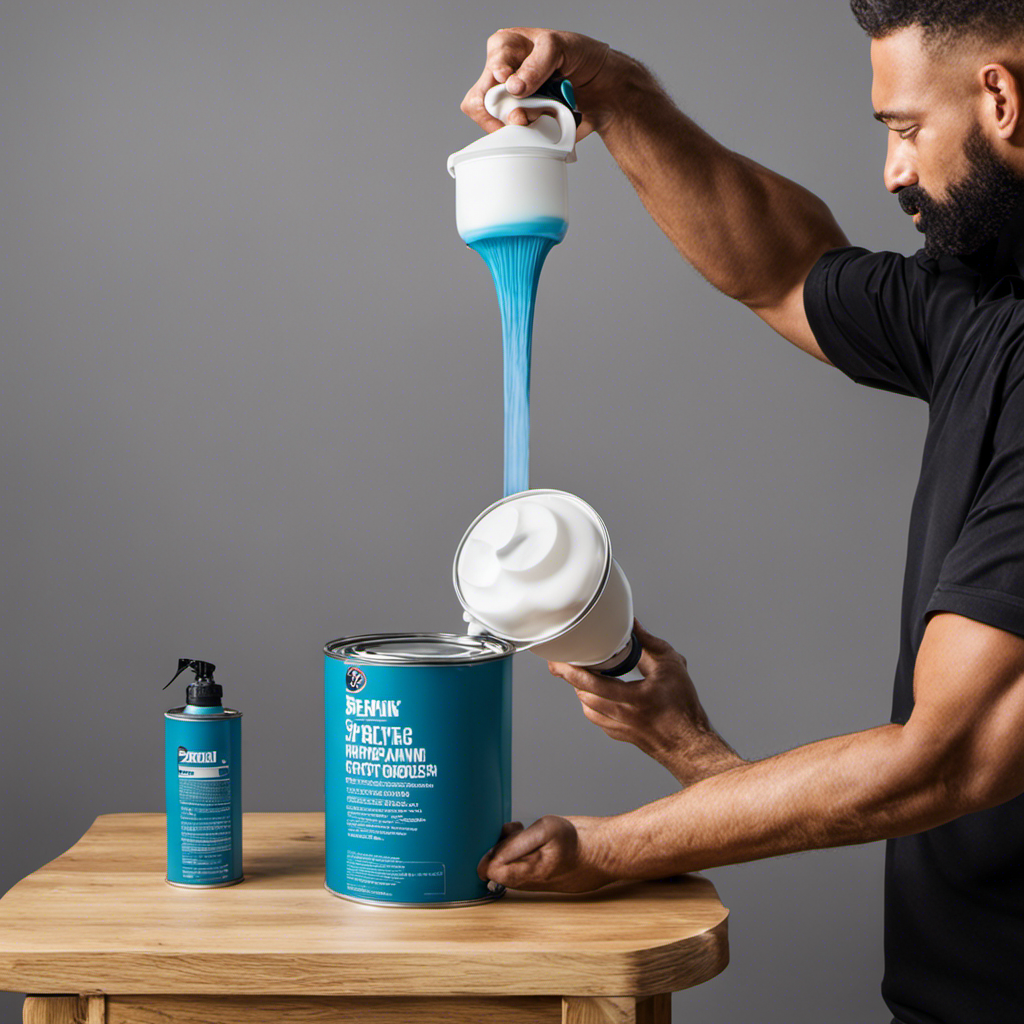To achieve a smooth spray finish, keep your environment between 65°F and 85°F and maintain humidity from 40% to 70%. Too cold, and your materials thicken, causing clogs; too hot, and they may dry too fast, leading to runs. High humidity slows drying, while low humidity speeds it up, risking defects. Managing these conditions guarantees consistent results. Stay tuned to learn more tips for perfect spray application and how to control your environment effectively.
Key Takeaways
- Maintain temperature between 65°F to 85°F to ensure optimal spray consistency and prevent clogging.
- Keep humidity levels between 40% and 70% to promote proper drying and surface finish.
- Use dehumidifiers or humidifiers to adjust environmental humidity as needed for ideal conditions.
- Avoid spraying in extreme cold or heat to prevent uneven coverage, drips, or sags.
- Monitoring environmental conditions helps achieve reliable application, reduces rework, and ensures professional results.

When spraying pesticides, paints, or other substances, maintaining the right temperature and humidity levels is vital for ideal results. These conditions directly impact how well your spray equipment functions and how quickly the applied material dries. If the environment is too hot or too cold, or if humidity levels are off, you may notice uneven coverage, poor adhesion, or extended drying times that can compromise your project’s success. Understanding the optimal conditions helps guarantee your spray application looks professional and performs effectively.
Temperature influences the viscosity of liquids you’re spraying. When it’s too cold, substances tend to thicken, making them harder to atomize through your spray equipment. This results in uneven spray patterns and can cause clogs or inconsistent coverage. Conversely, if it’s too hot, the material may become too thin, leading to drips or runs. The ideal temperature range typically falls between 65°F to 85°F, depending on the specific product you’re using. Keeping your environment within this range helps maintain the right spray consistency and reduces the chances of defects.
Maintaining 65°F to 85°F ensures optimal spray consistency and prevents defects.
Humidity also plays a vital role. High humidity levels slow down evaporation, extending the drying time of your coating or pesticide. This can increase the risk of runs, sagging, or smudging, especially if you’re working on vertical surfaces. Low humidity, on the other hand, accelerates drying, which might cause the coating to dry too quickly, leading to issues like poor adhesion or visible spray marks. It’s best to aim for relative humidity levels between 40% and 70%. Using dehumidifiers or humidifiers can help you fine-tune these conditions to match your specific application.
Drying time is directly affected by both temperature and humidity. When environmental conditions are vital, your spray equipment delivers a smooth, even coat, and the drying process proceeds as expected. If conditions are less than ideal, drying may be prolonged or uneven, forcing you to wait longer before applying additional coats or handling the surface. This not only delays your project but can also compromise the finish’s durability. Consequently, monitoring and adjusting environmental conditions before spraying can save time and prevent rework.
Frequently Asked Questions
How Do Temperature Fluctuations Affect Spray Drying Efficiency?
Temperature fluctuations can considerably impact your spray drying efficiency. When temperature stability is compromised, it causes inconsistent drying rates, leading to product quality issues and increased waste. You might notice longer drying times or uneven particle sizes. To maintain ideal efficiency, keep temperature as stable as possible during the process. Proper control ensures that your spray drying operates smoothly, delivering consistent, high-quality results every time.
What Humidity Levels Cause Spray Equipment to Malfunction?
You should keep humidity levels below 50% to prevent spray equipment malfunction. High humidity can cause moisture buildup, leading to clogs or inconsistent spray patterns. Use humidity sensors to monitor conditions accurately, and regularly calibrate your equipment to guarantee peak performance. Maintaining proper humidity prevents malfunction, ensuring smooth operation and consistent spray quality. Proper control helps avoid costly downtime and preserves the integrity of your spraying process.
Can Temperature Changes Impact Spray Paint Adhesion?
Yes, temperature changes can turn your spray paint’s performance into a rollercoaster ride. When you experience fluctuations, the paint surface might struggle to stick, causing adhesion quality to suffer like a handshake gone limp. Cooler temperatures slow down drying, while heat can make paint peel or bubble as if it’s fighting against the environment. To keep your finish flawless, maintain a steady temperature and guarantee ideal conditions.
How Do Seasonal Shifts Influence Humidity Control in Spraying Areas?
Seasonal shifts considerably influence humidity control in spraying areas, requiring you to adapt your climate management strategies. During high seasonal humidity, you should increase ventilation and dehumidification to prevent moisture buildup, which can affect paint adhesion. Conversely, in drier seasons, guarantee proper moisture levels to avoid static and uneven finishes. By monitoring seasonal humidity trends, you can make necessary climate adaptations, ensuring ideal spray performance and durable results.
What Are the Best Practices for Maintaining Consistent Temperature During Spraying?
Think of temperature stability as the steady heartbeat of successful spraying. To maintain consistent temperature, you should use climate control systems like heaters or air conditioners, ensuring they operate smoothly throughout the process. Regularly monitor and adjust humidity regulation devices to prevent fluctuations. Keep doors and windows sealed, and avoid rapid temperature changes. This proactive approach helps you achieve ideal spraying conditions, ensuring a flawless finish every time.
Conclusion
By following these temperature and humidity guidelines, you guarantee a smooth, professional spray job every time. Did you know that improper conditions can reduce paint adhesion by up to 50%? Staying within the recommended ranges helps you avoid costly mistakes and achieve a flawless finish. Keep an eye on the weather, and don’t rush the process—your perfect spray job depends on it!









